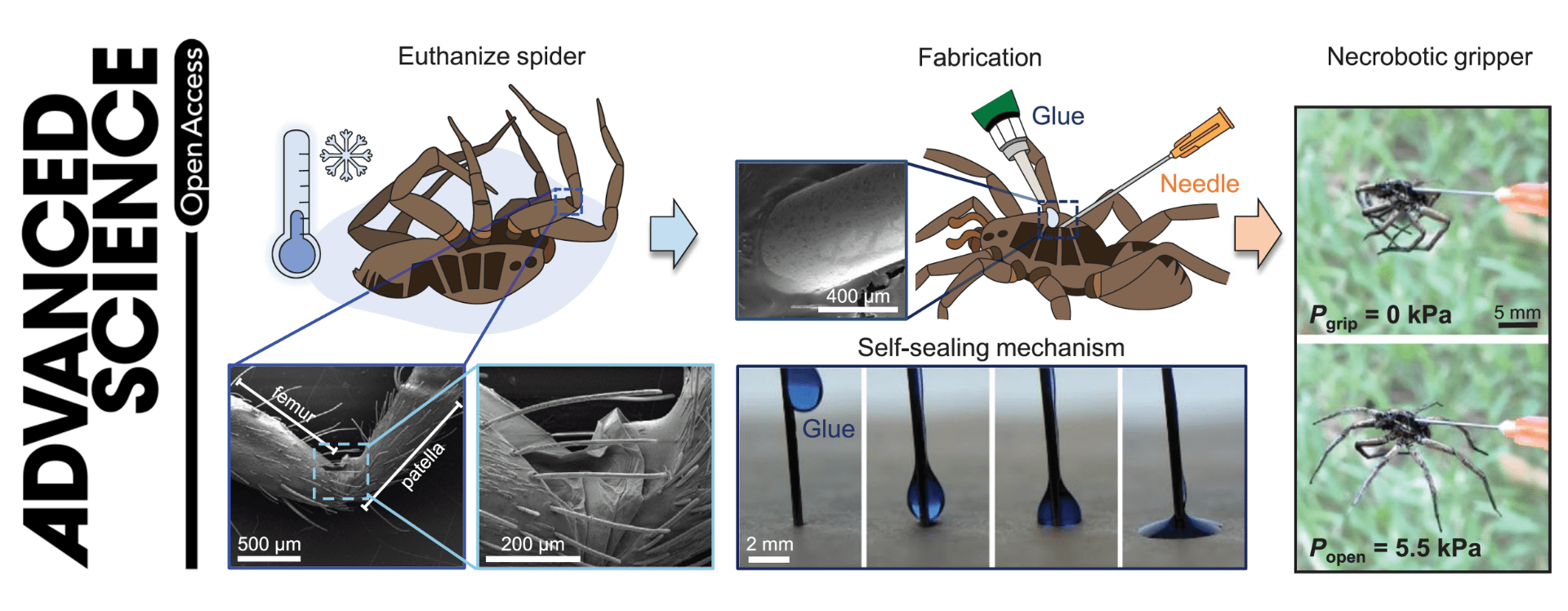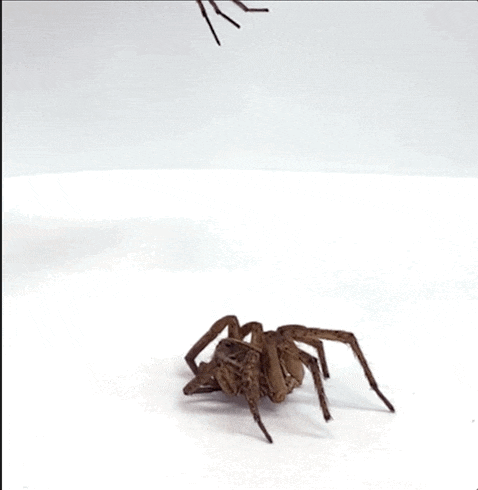Kids who dig robotics usually start out building projects that mimic insects in both appearance and action.
Daniel Preston, Assistant Professor of Mechanical Engineering at Rice University and PhD student Faye Yap come at it from a different angle. Rather than designing robots that move like insects, they repurpose dead wolf spiders as robotic claws.
Very little modification is required.
Yap explains that, unlike mammals, spiders lack antagonistic muscles:
They only have flexor muscles, which allow their legs to curl in, and they extend them outward by hydraulic pressure. When they die, they lose the ability to actively pressurize their bodies. That’s why they curl up.
When a scientifically inclined human inserts a needle into a deceased spider’s hydraulic prosoma chamber, seals it with superglue, and delivers a tiny puff of air from a handheld syringe, all eight legs will straighten like fingers on jazz hands.

These necrobiotic spider gripper tools can lift around 130% of their body weight — smaller spiders are capable of handling more — and each one is good for approximately 1000 grips before degrading.

Preston and Yap envision putting the spiders to work sorting or moving small scale objects, assembling microelectronics, or capturing insects in the wild for further study.
Eventually, they hope to be able to isolate the movements of individual legs, as living spiders can.
Environmentally, these necrobiotic parts have a major advantage in that they’re fully biodegradable. When they’re no longer technologically viable, they can be composted. (Humans can be too, for that matter…)
The idea is as innovative as it is offbeat. As a soft robotics specialist, Preston is always seeking alternatives to hard plastics, metals and electronics:
We use all kinds of interesting new materials like hydrogels and elastomers that can be actuated by things like chemical reactions, pneumatics and light. We even have some recent work on textiles and wearables…The spider falls into this line of inquiry. It’s something that hasn’t been used before but has a lot of potential.”

Conquer any lingering arachnophobia by reading Yap and Preston’s research article, Necrobotics: Biotic Materials as Ready-to-Use Actuators, here.
Hat Tip to Open Culture reader Dawn Yow.
Related Content
Isaac Asimov Explains His Three Laws of Robots
200-Year-Old Robots That Play Music, Shoot Arrows & Even Write Poems: Watch Automatons in Action
MIT Creates Amazing Self-Folding Origami Robots & Leaping Cheetah Robots
– Ayun Halliday is the Chief Primatologist of the East Village Inky zine and author, most recently, of Creative, Not Famous: The Small Potato Manifesto and Creative, Not Famous Activity Book. Follow her @AyunHalliday.


EWWW WHY?! NO! NO NO NO! GOOD GOD NO!